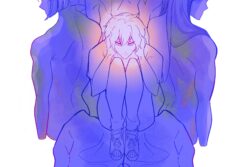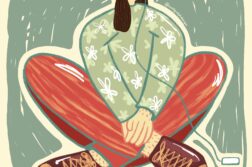The sighting of a sunflower symbolises invisible illness or disabilities, which are officially recognised throughout the country, and also around the world. Prior to the Covid-19 pandemic, the sunflower lanyard lacked force, except for within some service and travel industries.
Wearing the sunflower lanyard was therefore not of much use for me personally, except when occasionally taking a busy train. In this situation, it allowed me to legitimately request a seat before other passengers and provided the security that support would be given by staff, if conflict was to arise between myself and another passenger.
However, for other sunflower-lanyard wearers, the validation of authority the lanyard gave them to be able to confidently say “I am someone who needs to use the disabled toilet” or “I do not need to give up my priority seat on the bus for you” was invaluable. It allowed people to go about their day-to-day life with the necessary accommodations in place, and the knowledge that they would be supported in case an all-too-familiar Karen decided to object.
Furthermore, the visibility of the sunflower lanyard – once the general public understood what it meant – was important in tackling the stigma of such invisible disabilities, which are more common than you would think! It played an important role in demonstrating that not all disabled people (or otherwise people with chronic or long-term illness and health issues) look a certain way. We are not all in wheelchairs; a lot of us are completely independent, with the degree of disability fluctuating daily: on Monday someone could be capable of walking, but perhaps by Thursday, they need the support of a cane. There is a multitude of unrealised complexities, which the sunflower lanyard successfully brought into view, which was great.
Not so great though, has been the use of the lanyard throughout the Covid-19 pandemic. Unfortunately, it has come to symbolise mask-exemption, at least in Britain. For those whose hidden disabilities genuinely exempted them from mask wearing (and who probably already had the lanyard), great. But those who realised they could order themselves a lanyard online, or get one from a supermarket for free? Not so great. As a result of no establishment; organisation, or even individual legally able to ask another to provide evidence of having a genuine mask exemption, the availability of the lanyards was exploited by anti-maskers. This has hurt not only people with genuine mask-exemptions, but those who wore it for other reasons too. The general public have begun to lump persons who wear the lanyard for all the above reasons together: those with genuine mask-exemptions; hidden disabilities, alongside anti-maskers and lanyard-appropriators.
Suddenly people with a lanyard wearing a mask, were questioned in their efforts to keep themselves and others safe: “you know you don’t have to wear that if you have the lanyard, right?”. People wearing a lanyard and no mask were not questioned, and generally, things fell apart for those with hidden disabilities. A majority of the public only learned about the lanyard during the pandemic, with most solely connecting it to mask-exemptions. The force of the symbolic sunflower was lost; people didn’t realise that it was there to support those who needed assistance, and questions were raised yet again. Even members of staff who ought to have been taught the correct use of the lanyard were clueless, having been taken on as support during the pandemic.
Some smaller initiatives – both online and in-person, like tweets or posters – tried to correct people’s perception of the lanyard. But of course, they could only do this to a certain extent. A lot of people still have an incorrect understanding, which is arguably worse than no understanding. Although, with anti-maskers having given up trying to justify their actions, at least this is one epidemic that has come to an end.
But the previous damage remains. There is great irony is that the pandemic has created persons who need an initiative, damaged by the pandemic. Many newly chronically ill people, suffering from long-Covid, would actually have benefitted greatly from the original purpose of the lanyard. They too have an invisible disability, seeking support but feeling too scared to ask for it, or facing discrimination at the hands of those who do not understand the true meaning of the sunflower lanyard.
My hope for the future, is that the purpose and reasoning behind such a scheme can become more widespread, so that others can be educated. Nobody should be challenged just because another can’t necessarily see what’s wrong. Support should be there safely and securely, for those who need it.



